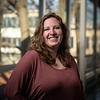Taking Measure
Just a Standard Blog
Atlantic Salmon Hormones, Trapping Molecular Ions, Lasers for Greenhouse Gas Measurements: Postdocs Share Their Stories on NIST Social Media
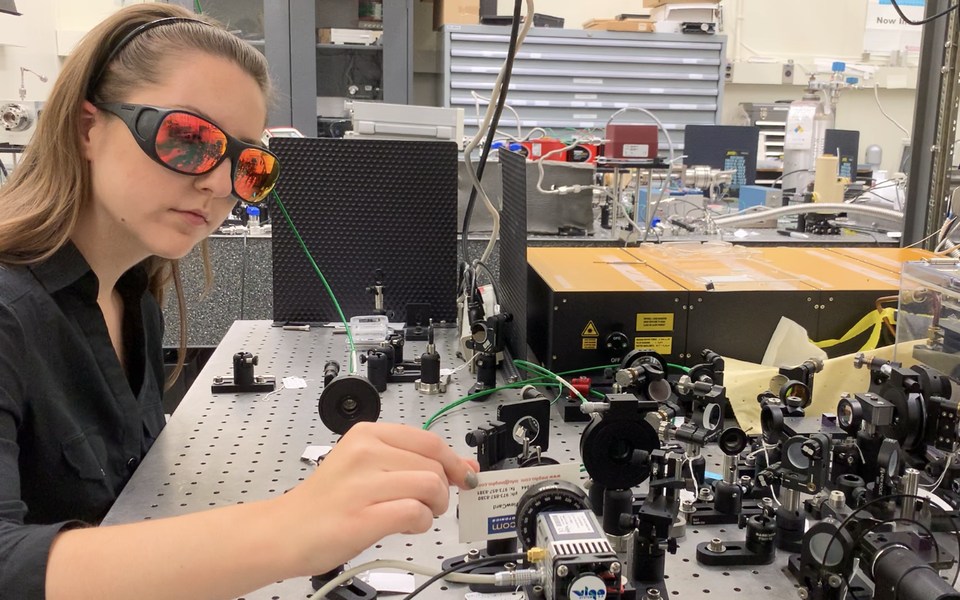
Michelle Bailey at an optical bench.
As the Feb. 1, 2021 deadline approaches for early-career researchers to join the National Institute of Standards and Technology (NIST) National Research Council (NRC) Postdoctoral Research Associateships Program, we’re looking back at the captivating stories of some of our postdocs in the program. These were originally published on NIST social media channels in September 2020 as part of National Postdoc Appreciation Week.
Erin Legacki
South Carolina to Maine, round trip — NIST postdoctoral researcher Erin Legacki recently made the trek north to study North American Atlantic salmon. But getting to NIST in the first place was also a wild ride.
From a young age, Erin knew that she wanted to work with animals, and an education at University of California, Davis, was her way to get started. But she quickly shifted gears in college from her childhood veterinarian dream toward the field of endocrinology, the study of hormones, when she fell in love with its complexities.
Hormones are behind all biological processes. They’re chemical compounds frequently working with one another to signal physiological changes such as placental growth during pregnancy. But even related species have completely different hormone profiles, and so Erin’s fascination put her in the path of cattle, horses, hyenas and whales. She even spent time as a fellow studying sun bears at the San Diego Zoo, and then as a zookeeper for five years after that.
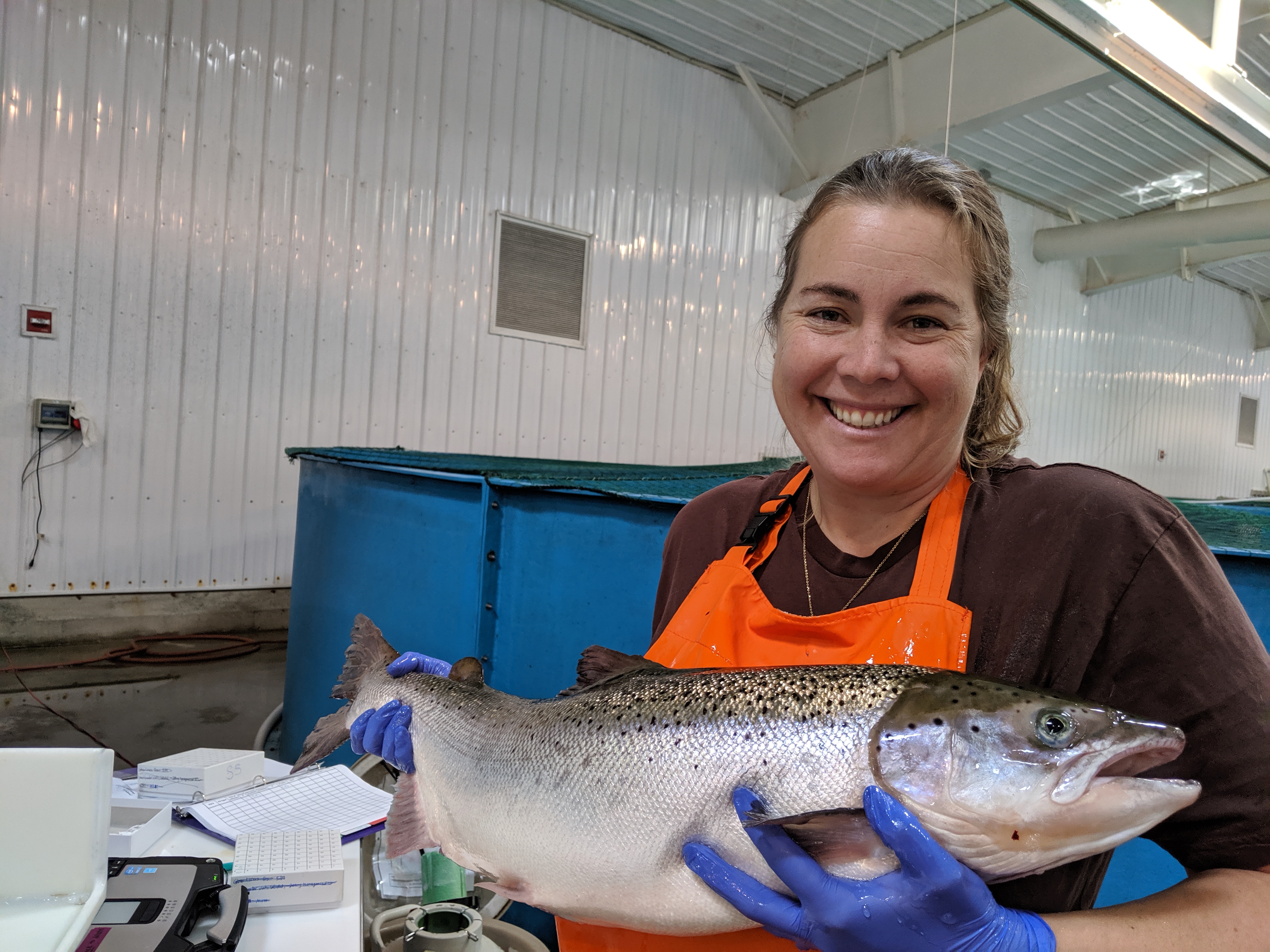
Curious about endocrinology on a broader scale, Erin found and connected with NIST's Ashley Boggs (now her NRC postdoc mentor), who shared the story of the North American Atlantic salmon, whose fertility has declined by more than 30% in two decades. It piqued Erin’s interest.
Now, she’s working with mucus samples from 200-plus individual live fish that she collected in a collaboration with the National Cold Water Marine Aquaculture Center in Maine, a facility run by the U.S. Department of Agriculture’s Agricultural Research Service. Not all fish produce mucus from under their scales, but salmon do! Skin mucus protects fish from contaminants in the water ... and that mucus has precious hormones for analysis.
Back at her home base at the Hollings Marine Laboratory in South Carolina, where NIST is a partner agency, Erin’s studying hormones and other biological molecules in the mucus to help the USDA better measure breeding quality to improve aquaculture yields. What wild things will she discover? We can’t wait to find out.
Alejandra Collopy
It’s the little things that make all the difference for recent NIST postdoctoral researcher Alejandra Collopy ... and by little, we mean quantum. She’s part of a team making strides in our understanding of the strange quantum world.
Alejandra and her team have been creating, trapping and probing charged calcium hydride molecules to understand changes in their rotational state by using a technique called quantum logic spectroscopy. While trapping atomic ions is a widespread practice these days, doing the same for molecular ions is still relatively uncharted territory.
These techniques could change that and promise broad applications to more molecules. The more the researchers dig, the more they’ll learn, and it’s that sense of discovery that charges up her team for more research every day.
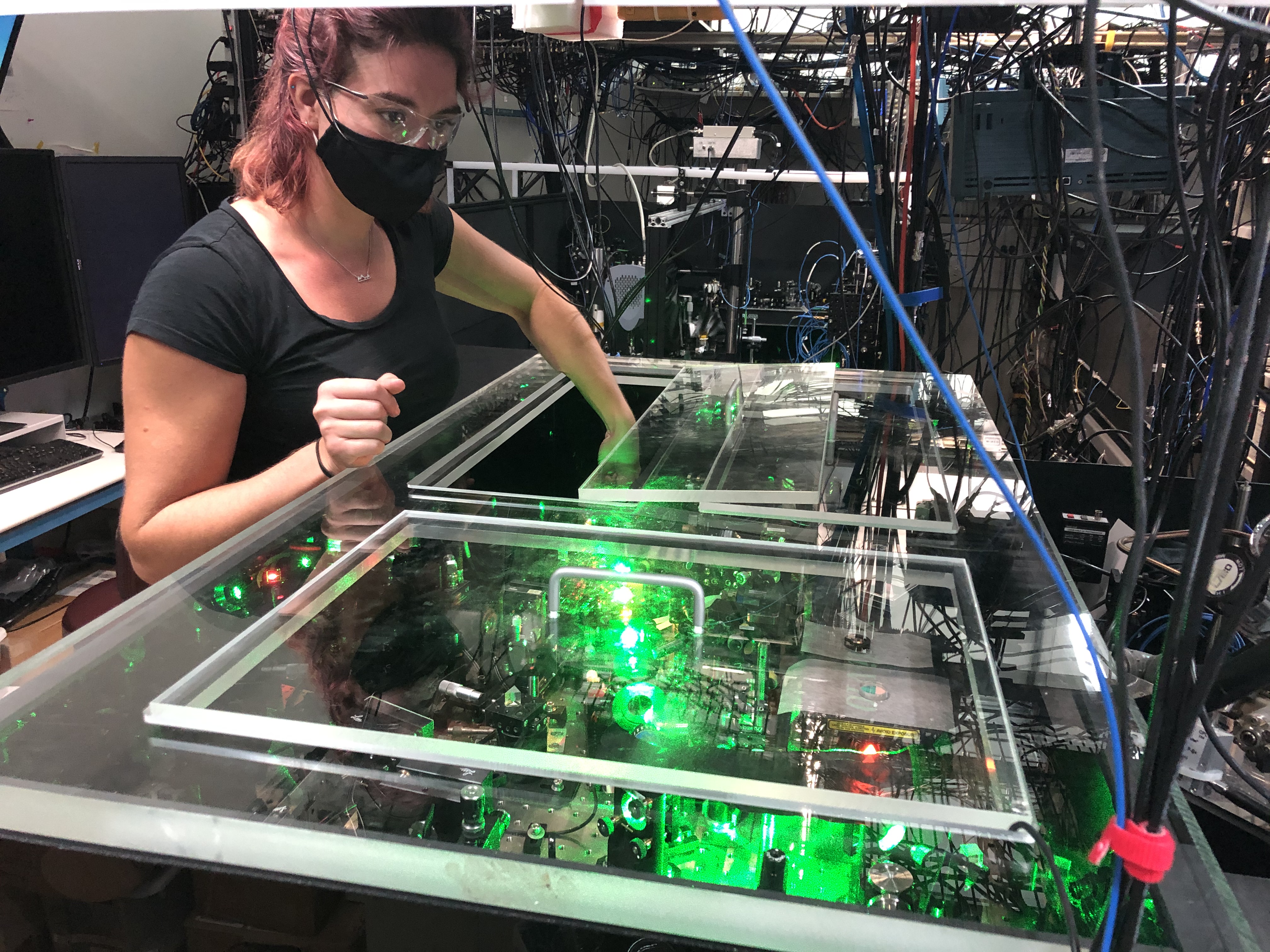
Alejandra always held a desire to know how things work and found a home in freshman physics classes at Stanford University, then at the University of Colorado Boulder and JILA for her graduate studies into neutral molecules. Fast forward to 2020, two years into her postdoctoral associateship at NIST, and she’s had a decade’s worth of background in molecules (neutral and charged) added to her resume.
And we know where her sense of discovery and passion for our world’s inner workings will take her next. Alejandra’s work with the NRC Research Associateship Programs ended in September. Now, she’s joining a group of researchers at NIST on the other side of quantum studies, exploring computing and the ways of producing reliable results for logic operations.
It’s good to have Alejandra on the charge toward our quantum-powered future.
Michelle Bailey
Over the course of seven years, recent postdoctoral researcher Michelle Bailey went from spending summers in the Alaskan wilderness to pushing boundaries in NIST’s state-of-the-art labs. How did she get from point A to point B? See for yourself ...
When Michelle went to The George Washington University for graduate school, she soon found herself immersed in a laser spectroscopy project that had her building instruments from the ground up. Often, she and her colleagues were asked if they were truly engineers instead of chemists, since they focused so much on the technology and its applications in chemistry.
The research team transported her instrument piece by piece from the East Coast to Alaska, reassembled it in a hotel room and then hiked it into the swampy wilds. Their goal was to examine permafrost thaw, a source of carbon, and its potential effects on the environment.
But the timetable for the entire process was rough, with a year's worth of preparation and only four weeks to gather the precious data in the field. After repeating the cycle three times in five years, Michelle traded in her gumboots and bug net in search of a stable and cutting-edge environment at NIST.
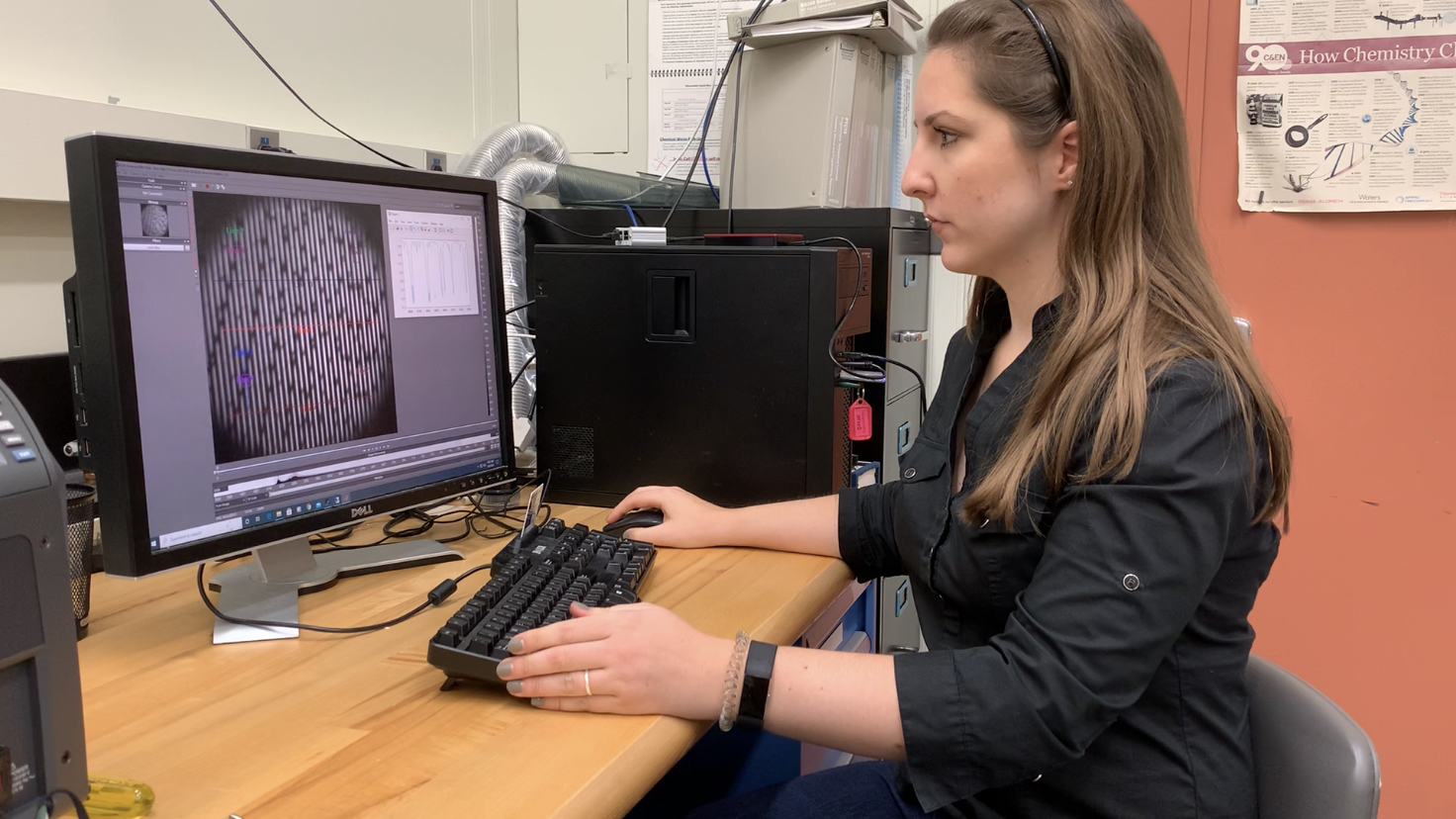
Since September 2018, Michelle has been at our campus in Gaithersburg, Maryland, to complete her postdoc through the NRC Research Associateship Programs. She and her colleagues focus on high-quality laser spectroscopy, using optical frequency combs and high-speed camera technology to look closely at gas molecules.
Specifically, they’ve been homing in on nitrous oxide, a greenhouse gas with stronger concentrations in Earth’s atmosphere year over year. Using frequency combs, they can look at the different molecular configurations of the gas, which can ultimately help determine its origin, be it agricultural or wild lands. Take a look at their recently published work.
Now, Michelle joins her colleagues in a new phase of that postdoc research. The paper proved the concept that we can use the technology to precisely identify gas composition. Next, Michelle tackles its operational difficulties, seeking to make the technique automated and user friendly.
As of September, Michelle has shifted from her NRC postdoc status to a federal role as a term research chemist at NIST for another year.


